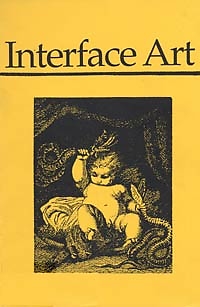The ultimate interface is between mind and reality, an interface presided over by natural language. As the machine becomes an ever-greater part of our reality,
our dialogue with it will increasingly resemble natural language. This is the starting point for a unique book from a truly original mind that may one day take
its place up there with Ted Nelson's Hypertext in the pantheon of obscure-but-influential computer books.
While Artificial Intelligence has sought to make machines emulate the human mind, Interface Art seeks to advance the mind by enlisting the aid of
information technology. If Eiffe rejects the technocratic path of thought-extension, neither is he retrogressive in his approach.
The computer screen is not a book and deserves its own solutions, points out Eiffe: new icons, new keyboards and new concepts are needed to cope with the
coming info-blitz as computers do for information what they have already done for words and numbers. With its mix of exercises, mind games, obscure
factoids from the history of language, Interface Art constitutes a course of intellectual callisthenics to tone up the imagination of anyone dissatisfied with the
state of the interface art.
Although designed for student and professional programmers, there is not a line of code in the book. Instead, Eiffe uses simple, accessible language, organised
in (humourously-provocative) bite-sized chunks of text interspersed with flippant and decorative clip art.
Mediamatic has no information on the author or his background, but Interface Art speaks for itself. Grab a paper plate and load up on this conceptual
smorgasbord as soon as you can find it.
